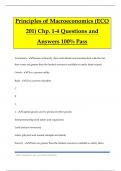Notes de cours
Summary notes for Introduction to Political Science part 2
- Établissement
- EPSCI
This document is 19 pages summary of all major concepts connected to the course of introduction to politics. This document provides theory, examples and scientists on topics of political economy, political inputs and outputs and more. It specifically takes interest in the examples found in the Midd...
[Montrer plus]





